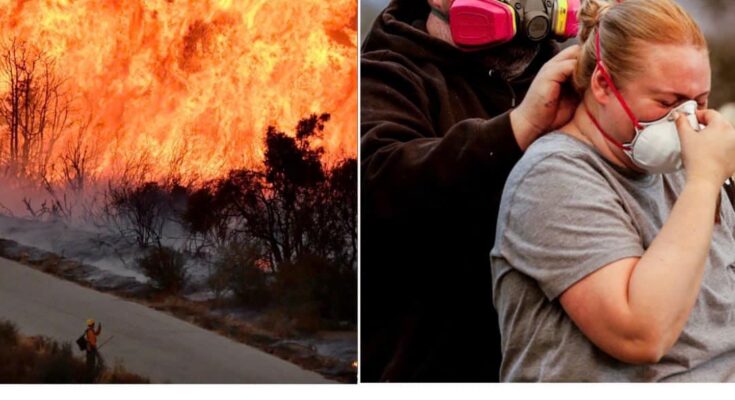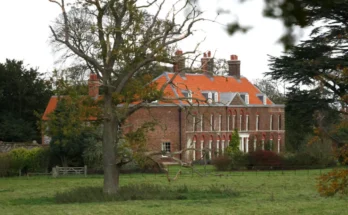Five wildfires are still burning in Los Angeles, burning more than 14,000 hectares (36,000 acres) — an area the size of Miami — according to the California Fire Department. The largest, the Palisades Fire, is the most destructive in Los Angeles history, having burned more than 8,000 hectares (20,000 acres), including coastal land between Santa Monica and Malibu.

While firefighters reported some progress on Jan. 10, high winds are expected to return, increasing the threat to the area.
Evacuation efforts from the Palisades Fire will continue on Jan. 10, and emergency responders will also be deploying personnel and additional equipment to the area, said California Fire Marshal David Acuna. Predicting the path of the fire is a challenge, he said. “One of the problems we have right now is that in the next 30 minutes, you don’t know where the fire is going to be,” he said.
The Eaton Fire near Altadena and Pasadena is only about 3% contained as it has grown to more than 12,000 acres. Several other fires have broken out across Los Angeles as strong winds continue to blow, including the Kenneth Fire, which broke out on Jan. 9 near Woodland Hills.
The fires have reduced entire areas to ash, destroyed more than 10,000 homes and prompted evacuation orders for more than 150,000 residents. At least 11 people have died in the two largest fires, including six in the Eaton Fire and five in the Palisades Fire, according to Los Angeles’ latest count.
On January 10, the fight against the Los Angeles wildfires became an international effort when Mexico and Canada announced they would send firefighters and other resources to California. On the afternoon of January 10 (local time), California Governor Gavin Newsom announced that firefighters from Mexico were en route to the Eaton Fire, joining more than 10,000 firefighters in the area. The National Guard and forces from neighboring states have also deployed forces to California to respond to and deal with the wildfire disaster.
Government warnings and instructions
The state of California and the federal government have issued many announcements about the situation as well as firefighting, rescue and relief activities.
Regarding water resources, residents of Altadena, Malibu, Pasadena, Pacific Palisades and parts of the northern San Fernando Valley, including Sylmar, have been advised to boil water, while authorities have asked residents to use bottled water due to concerns about contamination.
A curfew has been issued for mandatory evacuations related to the Palisades and Eaton fires from 6 p.m. on Jan. 10 to 6 a.m. on Jan. 11. Los Angeles Police Chief Robert Luna warned that those who do not comply with the curfew could be arrested.
President Joe Biden has pledged that the federal government will cover the entire cost of responding to the wildfires in Southern California for 180 days. Biden also announced immediate financial assistance and urged those affected by the devastating fires to visit disasterassistance.gov or call 1-800-621-3362 for assistance.
More than 184,000 homes and businesses across California were without power as of the afternoon of Jan. 10, according to PowerOutage.us. Meanwhile, the Los Angeles school district announced that all of its campuses would be closed on Jan. 10 due to fires and hazardous air quality. The University of California, Los Angeles canceled in-person classes on Jan. 10.
Wind Forecast for Next Week
The forecaster said Santa Ana winds are likely to blow through Southern California over the next few days, which could exacerbate wildfires across the region. The highest gusts are expected early next week, especially overnight on Jan. 13 and into Jan. 14. Winds measuring nearly 100 mph are like fuel for raging firestorms. However, “We’re not expecting winds as strong as we saw earlier this week,” said AccuWeather senior meteorologist Heather Zehr.
Los Angeles remains under a red flag warning for the morning and afternoon of Jan. 10, with winds expected to range from 31 to 47 mph, with some gusts reaching over 60 mph.
Investigating Fire Water Supply Issues
The governor of California has announced an independent investigation into water supply issues that may have hampered firefighting efforts.
In a letter to the heads of the Los Angeles Department of Water and Power and the Los Angeles Public Works Department, Newsom said the loss of water pressure at local fire hydrants and the lack of water from the Santa Ynez Reservoir were concerning. He said state fire and water officials would conduct an independent review of what caused the outages.
The governor noted that local fire hydrants are not designed to fight large wildfires, but the loss of water supply here could hamper efforts to protect some homes and evacuation



